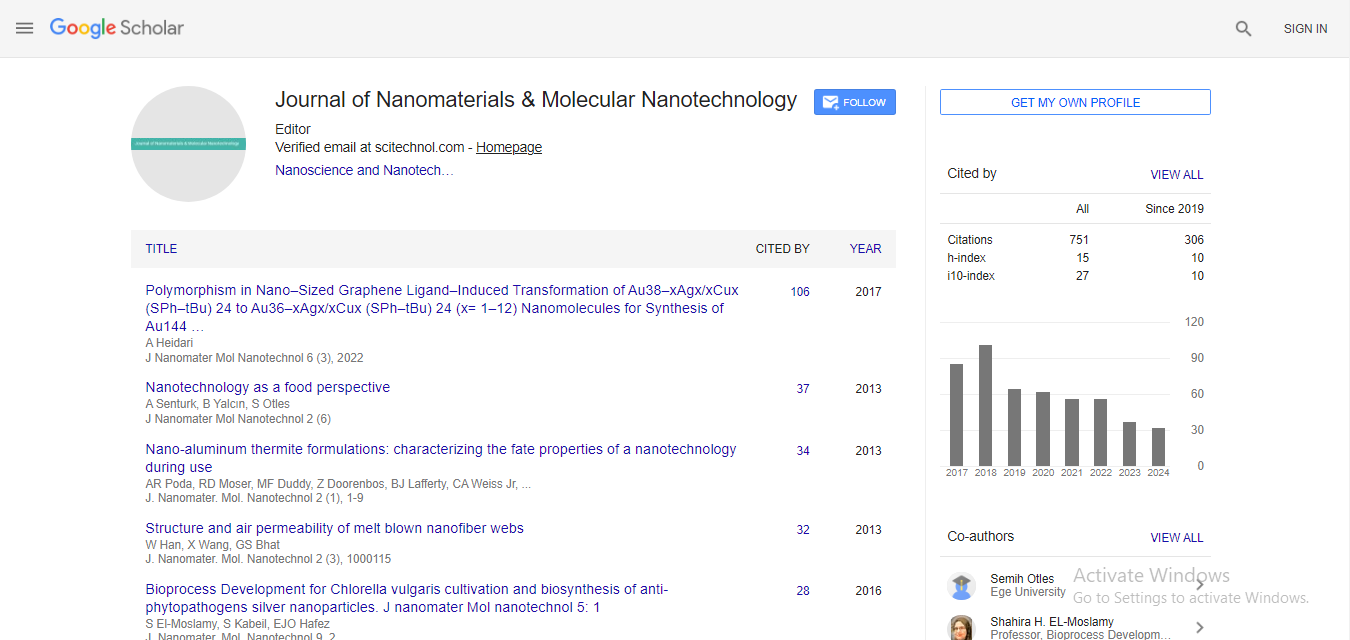Hybrid nanostructures: Rational design for energy and biomedical applications
Dongling Ma
National Institute of Scientific Research, Canada
: J Nanomater Mol Nanotechnol
Abstract
With unique physical and chemical properties, and high potential for many important applications, nanomaterials have attracted extensive attention in the past two decades. In particular, due to their unique, size and shape-tunable surface plasmon resonance, plasmonic nanostructures have recently been explored for enhancing the efficiency of solar cells and photocatalysis via improved light scattering, strong near field effect and/or hot electron injection. On the other hand, near infrared quantum dots (QDs) with size tunable bandgaps, broad absorption, narrow and bright emission, and high potential for multiple exciton generation represent a class of promising materials for new generations of solar cells and theranostic agents. Combination of different nanomaterials into a single architecture leads to even more promising, multifunctional nanomaterials. In this talk, I will present our recent work on the synthesis of nanomaterials (including plasmonic nanostructures and NIR QDs), and their assemblies as well as their applications in solar cells, smart windows, solar fuel, photocatalysis and biomedicine. Rational design of hybrid nanomaterials in order to maximize benefits is highlighted.
Biography
Dongling Ma is a full professor at Institut National de la Recherche Scientifique (INRS), Canada. Her main research interest consists in the development of various nanomaterials (e.g., quantum dots, catalytic nanoparticles, plasmonic nanostructures, and different types of nanohybrids) for applications in energy, catalysis, and biomedical sectors. Before joining INRS in July 2006, she was awarded Natural Sciences and Engineering Research Council Visiting Fellowships and worked at National Research Council of Canada from 2004 to 2006. She received her Ph.D. degree from Rensselaer Polytechnic Institute (USA) in 2004.
E-mail: ma@emt.inrs.ca
 Spanish
Spanish  Chinese
Chinese  Russian
Russian  German
German  French
French  Japanese
Japanese  Portuguese
Portuguese  Hindi
Hindi 



